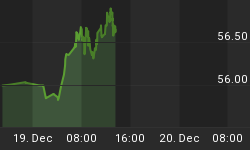Lindsay's Long Cycle serves as the basis for forecasting bull and bear markets. It lasts for approximately 20 years and its important highs and lows are labeled points A through M.

Figure 1
Lindsay wrote that to find the high of a basic cycle (points B, D, F, H, J, and L) confirming Middle Section forecasts must be found centered on the low of the current basic cycle and the low of the of the final basic cycle (point K) in the previous long cycle. Figure 2 shows how the highs of the first multiple cycle (B and D) were forecast.
Using point K works quite well when forecasting cycle highs in the first multiple cycle of the current long cycle (2002-20XX) but when forecasting the highs of the second multiple cycle (points F, H, and J) I have found that centering a Middle Section forecast on the low of the first basic cycle in the current long cycle (point C) works better than point K (figure 3).
The Lindsay forecast for Point H and the end of the 2009 bull market is June 4-9.
Take a "sneak peek" at Seattle Technical Advisors.

















